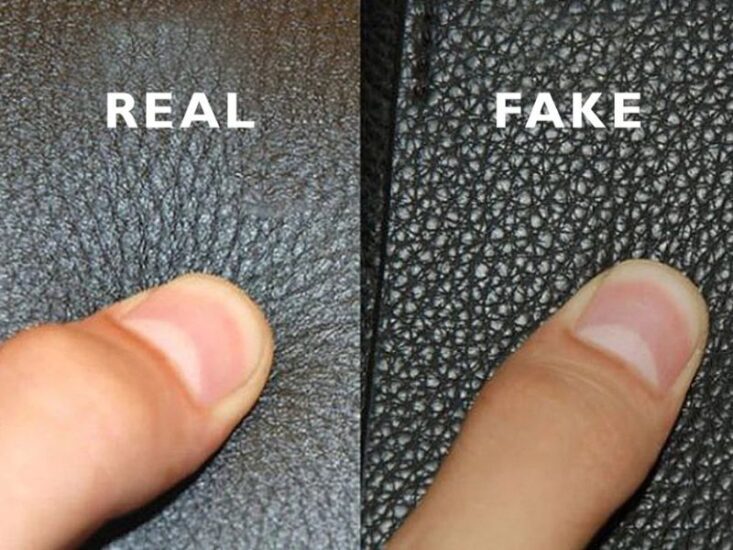Leather’s durability and the air of sophistication it exudes have made it a go-to material for countless generations. Vegan leather, often known as imitation leather, has become increasingly popular as a result of ethical and environmental concerns.
The question then becomes, what materials are used to fabricate faux leather? In this article, we’ll take a closer look at many of synthetic leather’s most typical materials.
Polyvinyl Chloride (PVC) Leather
Most synthetic leathers use polyvinyl chloride (PVC) in their construction. Synthetic PVC leather, sometimes known as vinyl or pleather, is created using chemicals derived from petroleum.
Fabric is coated with layers of PVC resin and plasticizers to create PVC leather, which has a leather-like appearance and feel.
The low cost and adaptability of PVC leather have contributed to its widespread use. The damage it does has been a source of worry for environmentalists. PVC is not only not biodegradable, but its production also results in the release of harmful chemicals and greenhouse gases.
Polyurethane (PU) Leather
Polyurethane (PU), another common synthetic, can also be used to create faux leather. Polyurethane (PU) leather has a leathery look and feel because polyurethane is sprayed over a fabric backing. Due to its lesser environmental impact, this material is gradually replacing PVC leather.
Since it can breathe and stretch, polyurethane leather looks and feels more like real leather than PVC leather. The reduced toxicity and ease of recycling make it preferable for the planet.
Microfiber Leather
Microfiber leather, often known as synthetic leather or fake leather, is a type of faux leather made from extremely fine synthetic fibers. These fibers often contain either polyester or polyurethane. Microfiber leather is made by affixing these fibers to a polyurethane-coated cloth base.
There are many benefits of microfiber leather over traditional leather and other synthetics. It can’t be damaged by rain, snow, or dust and dirt, thus it’s great for outdoor use. Microfiber leather is produced without the use of any animals and with much less water and energy than traditional leather.
Recycled and Bio-based Materials
Faux leather alternatives manufactured from recycled or bio-based materials have seen increased demand in recent years. Because of the environmental damage caused by traditional synthetic leather, finding viable substitutes became a top goal.
To create recycled faux leather, waste products from the textile and plastics industries are repurposed. This stuff is used to make stuff that looks and feels like leather. This type of synthetic leather may be used over and over again, reducing the need for landfills and saving valuable resources.
Bio-based imitation leather is produced utilizing renewable plant materials rather than petroleum. With the right processing and treatment, these materials can pass for real leather. Because it is made from plant materials rather than petroleum, bio-based imitation leather has a smaller environmental impact than conventional synthetic leather.
Conclusion
Due to ethical and environmental concerns, synthetic leather has replaced real leather as the go-to substitute. Polyvinyl chloride (PVC), polyurethane (PU), and microfibre are the most often utilized synthetic materials for making fake leather.
Synthetic leather alternatives made from recycled or bio-based materials have seen increased research and development in recent years.
As shoppers become more concerned, there is a greater demand for eco-friendly and morally sound alternatives to leather.
With the advent of modern materials and manufacturing methods, synthetic leather alternatives that are easier on the environment are becoming a viable choice.

